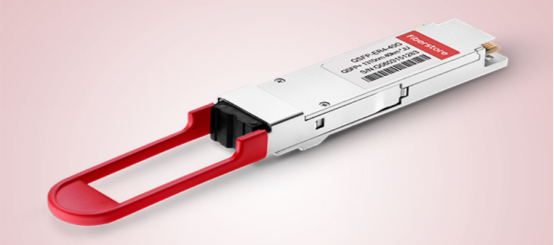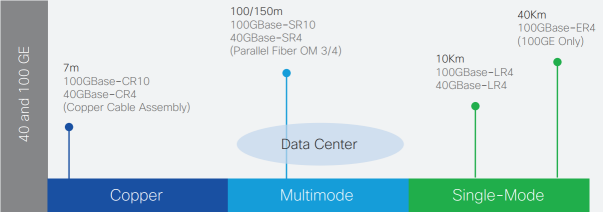40 Gigabit Ethernet is now playing an important role in the IT landscape, and the business case for Ethernet 40G is becoming inescapably compelling. Although 10 Gigabit Ethernet is still occupying a large space in the data centers, IT managers and engineers will finally consider what they are going to do with the next market drivers for high-bandwidth applications such as server virtualization and cloud computing; fabric consolidation within the data center; and a greater demand for high-performance computing among end users.
40G Ethernet is a standard that enables the transfer of Ethernet frames at speeds of up to 40 gigabits per second (Gbps). In 2010, the IEEE 802.3ba announced the 40 Gigabit and 100 Gigabit Ethernet standards, which specifies the technology and requirements for the development of higher speed Ethernet components and systems that operate at 40 and 100 Gbps. Previous versions of Ethernet could use standard Category 6 (Cat 6) copper wiring and RJ45 connectors, which have been around for decades and are readily deployed. 40G Ethernet runs on Quad Small Form Factor Pluggable (QSFP) cabling, a high-density fiber connector with 12 strands of fiber. According to the IEEE Higher Speed Study Group, 40G Ethernet fulfill the following requirements and objectives:
- Preserve existing 802.3 frame format, minimum size, and maximum size.
- Support high-bandwidth applications such as video on demand and high-performance computing (HPC).
- Support high-speed switching, routing, and application functions in data centers.
- Provide support for optical transport network (OTN).
- Provide specifications for operation over single-mode optical fiber, laser optimized multimode optical fiber, copper cables, and backplanes.
Transceivers for Ethernet 40G are being developed along several standard form factors. Generally speaking, there are three types of transceivers applied for 40G Ethernet—QSFP (Quad Small-Form-Factor Pluggable), QSFP+, CXP and CFP, of which the mainstream is the QSFP+. The QSFP+ is an evolution of QSFP and it provides four transmit and four receive lanes to support 40 Gigabit Ethernet applications for multimode fiber and copper today, and may serve 40G Ethernet cables and connectors.

As for CFP, its size is much larger than QSFP. It is featured by 12 transmit and 12 receive 10Gbps lanes to support one 100 Gigabit Ethernet port, or up to three 40 Gigabit Ethernet ports. Its larger size is suitable for the needs of single mode optics and can easily serve multimode optics or copper.
Cable for 40 Gigabit Ethernet can be either optical fiber or copper. The supportable channel length depends on the cable and the transceiver type. As for the connectors, the only significant change stipulated in the 802.3ba standard is the use of MPO (Multi-Fiber Push On) -type connectors at the multimode transceivers to support the multifiber parallel optics channels. For data centers that operate at 40 Gbps, OM3 and OM4 multimode cabling is generally recommended because its reach supports a wider range of deployment configurations compared to copper solutions. And the cost is lower compared to single-mode solutions. Except for the MPO connectors mentioned above, there are also some 40G transceivers equipped with LC connectors that need to work together with LC patch cables. The cabling for 40 Gigabit Ethernet has been summarized in the following picture.

It has been predicted that the future is 40G Ethernet, so don’t wait to migrate your network to the future technology. At FS, we can provide our customer a good selection of 40G transceivers that are of excellent quality. For further details, such as pricing and availability, please do not hesitate to contact us at www.fs.com.